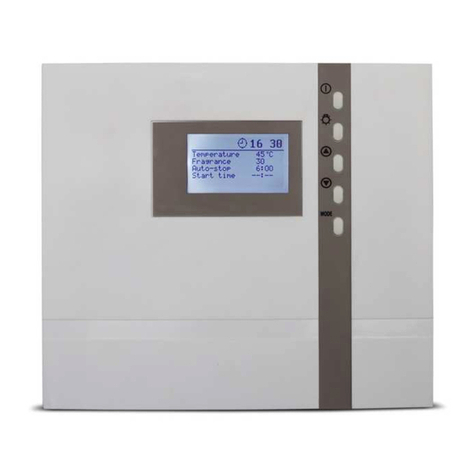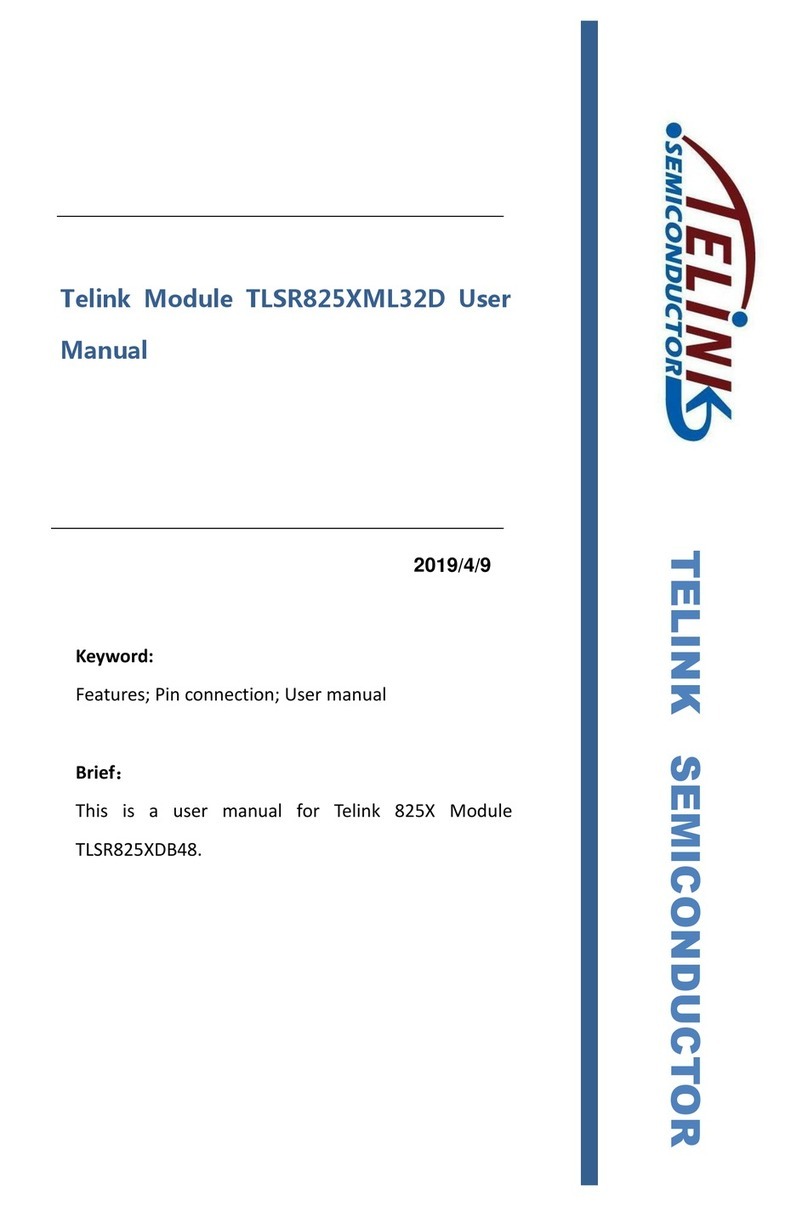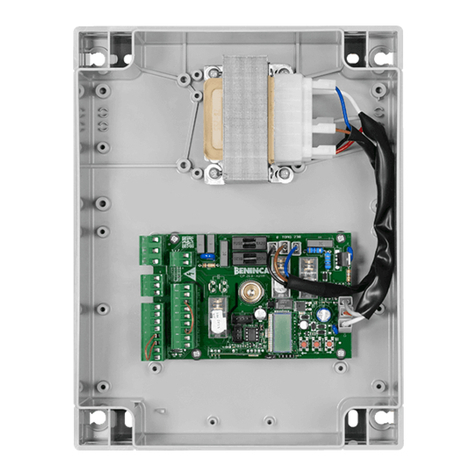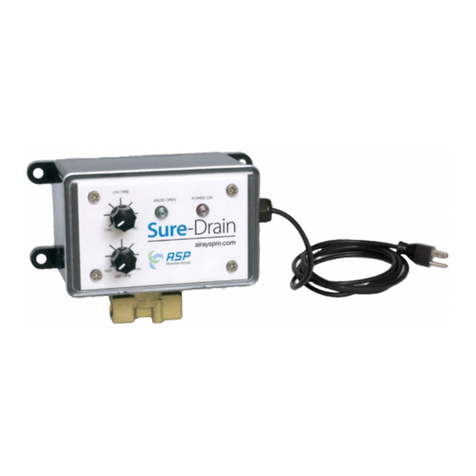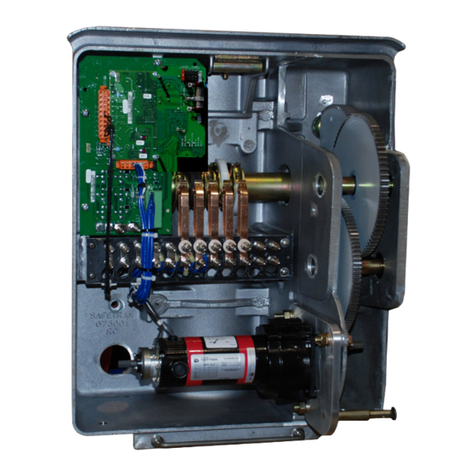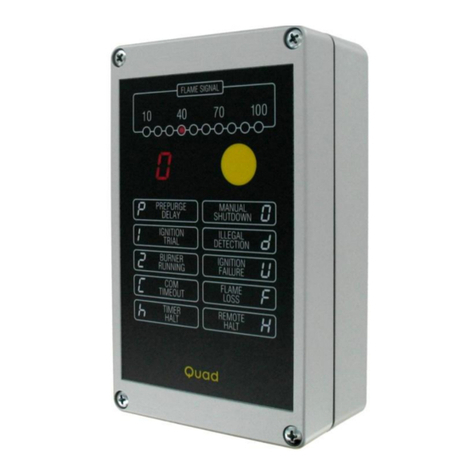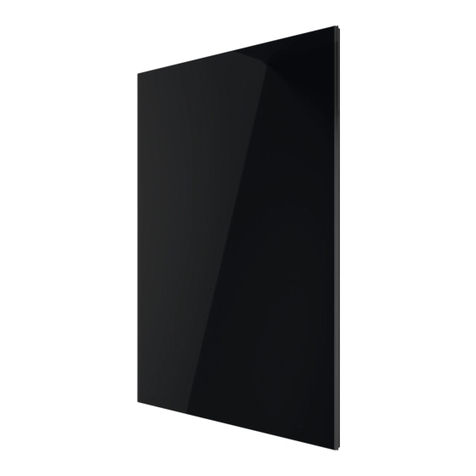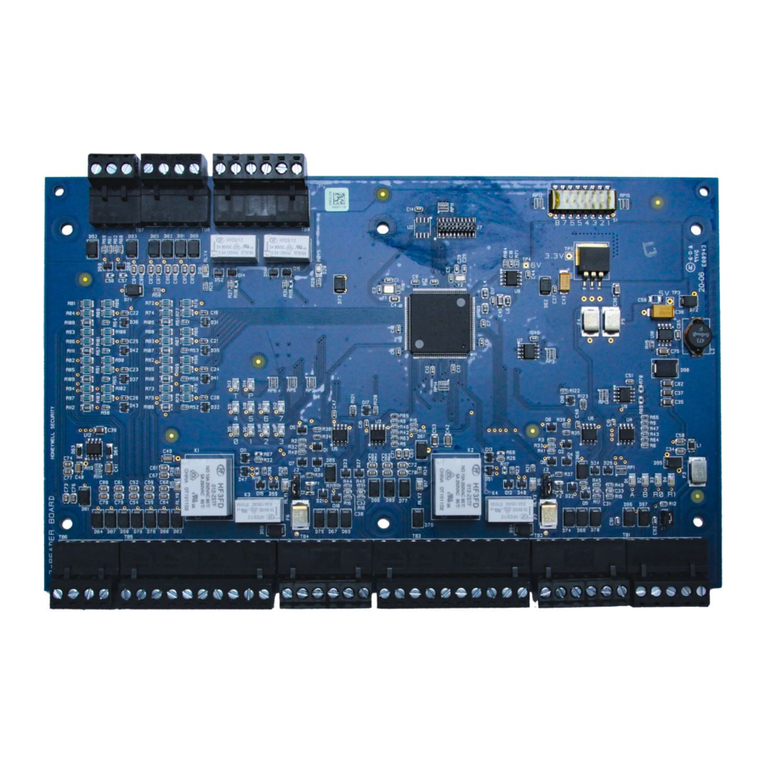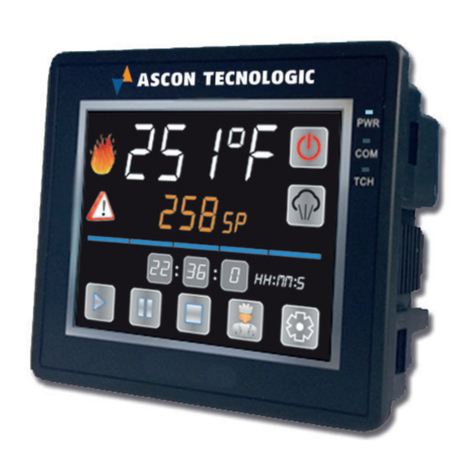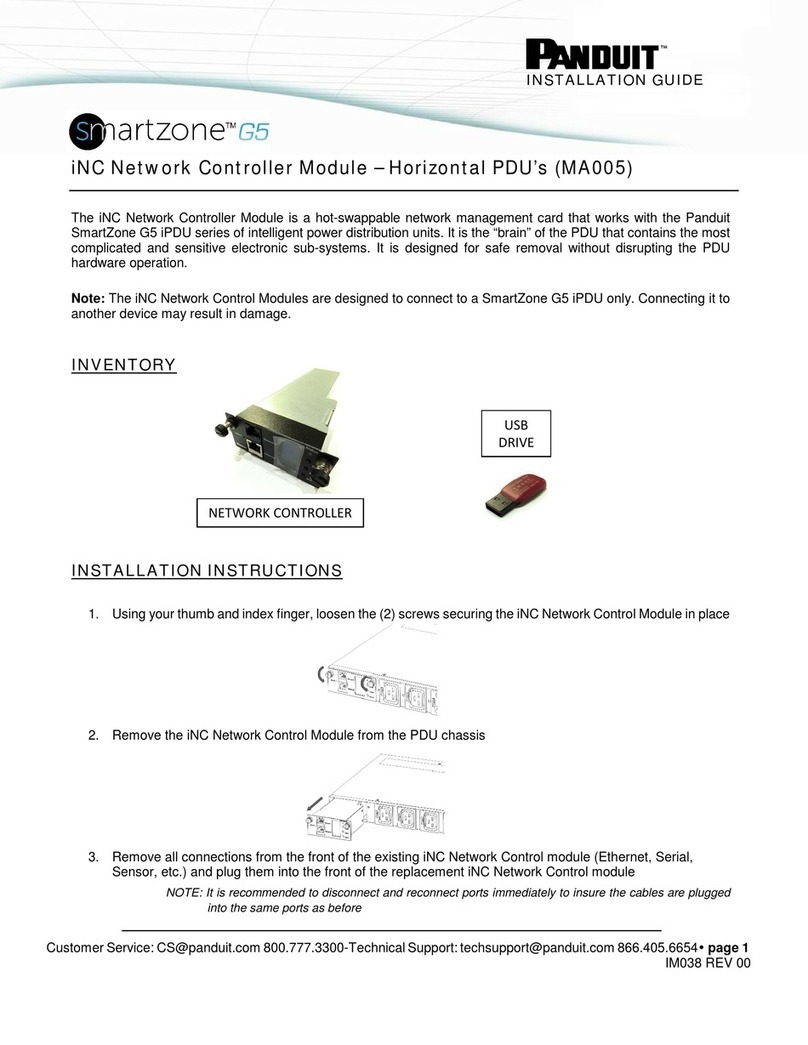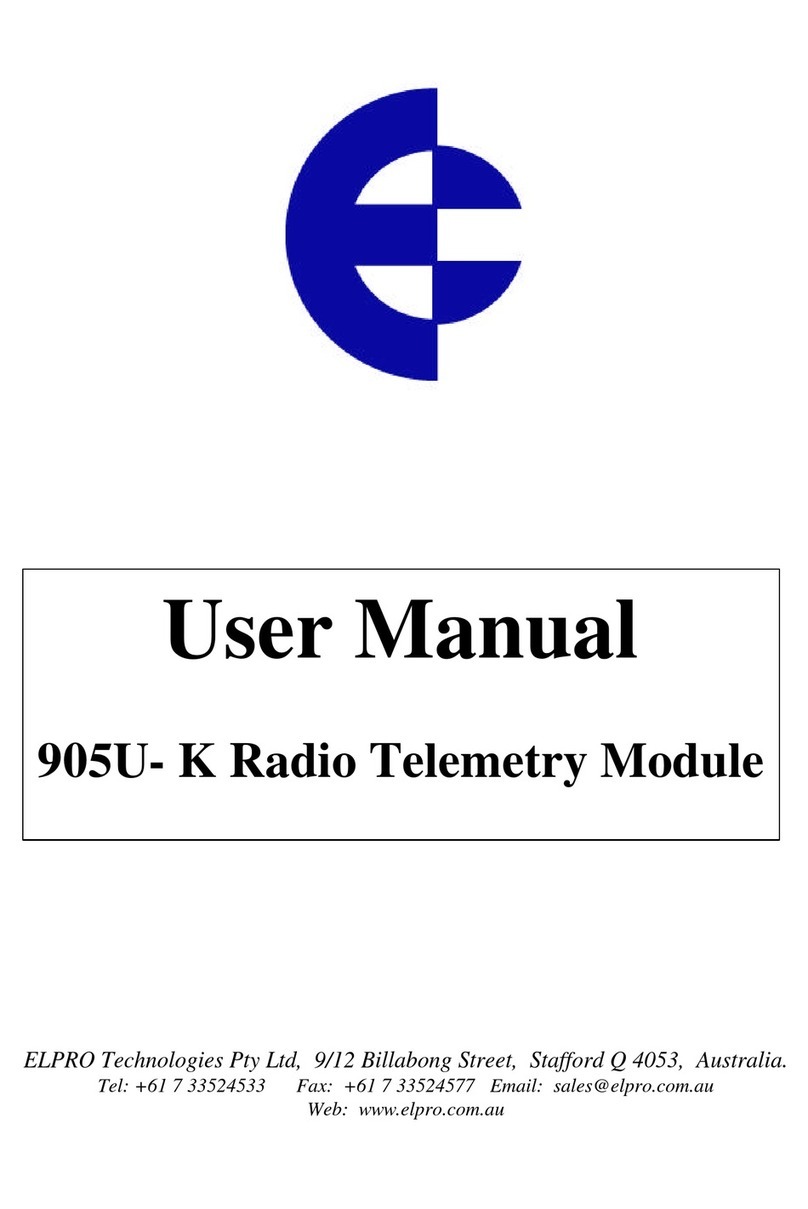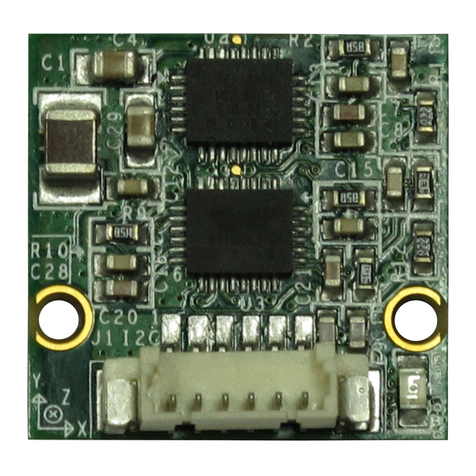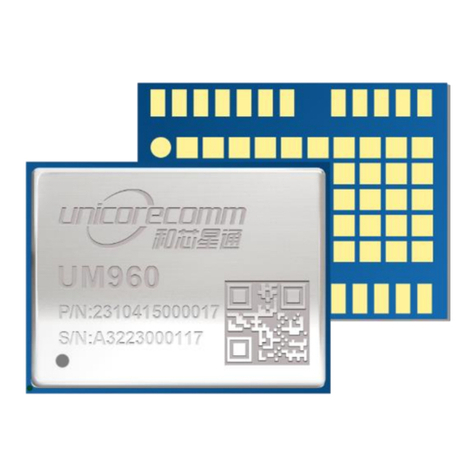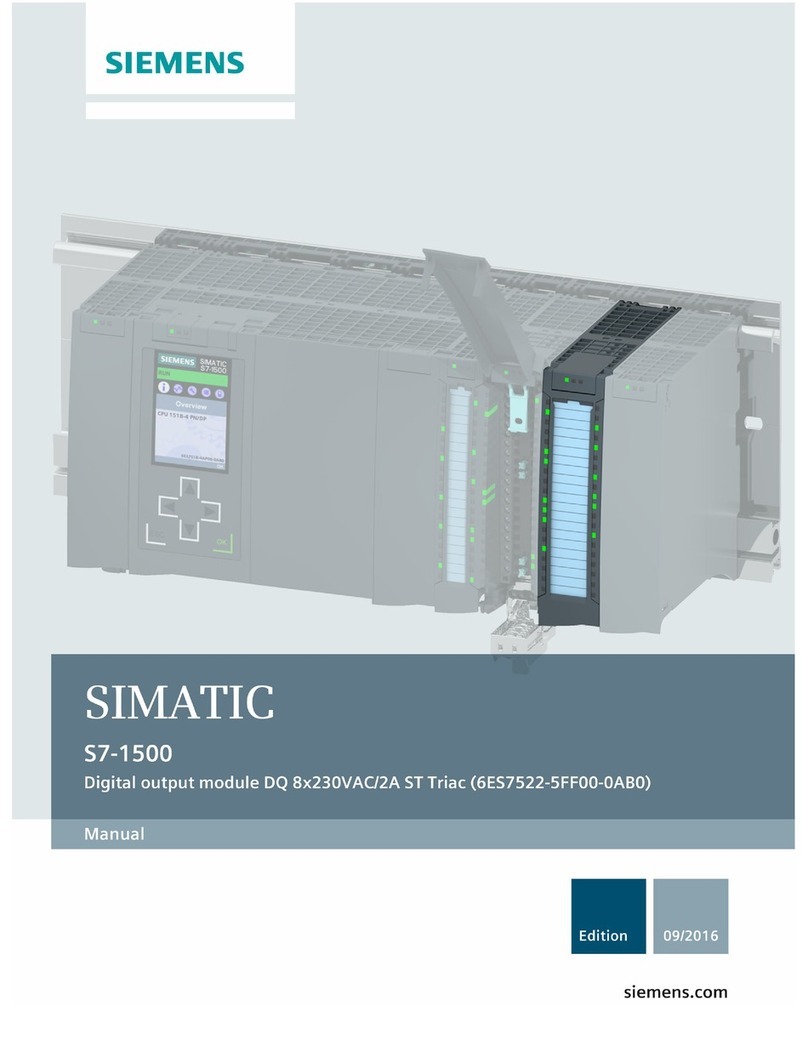SPI Infrared SBE1 M2D User manual

SPI CORP M2D TRIP EOIR GIMBAL SYSTEM
SBE1 Recording, Tracking
+ IP Conversion
Module
User Manual
!
Ver 2.0
This document is the property of SPI CORP www.x20.org

TRIP Manual
Ver : 1.8
www.x20.org
Compilation and Publication Notice
This manual covers the latest product descriptions and specifications.
The contents of this manual and the specifications of this product are
subject to change without notice.
SPI reserves the right to make changes without notice in the
specifications and materials contained herein and shall not be
responsible for any damages (including consequential) caused by
reliance on the materials presented, including but not limited to
typographical and other errors relating to the publication.
For Further information please contact
SPI CORP
Table of Content
- Page !of !–2 41
- SPI Proprietary and Confidential Information -

TRIP Manual
Ver : 1.8
www.x20.org
1. Introduction 4
2. Architecture 5
3. Physical connectivity 6.......................................................................
3.1. Wire(Harness( 7(
4. Functionality 8
5. IP Setting 10
6. SBE1 Board Setting 11.......................................................................
7. SBE1 Board Firmware Update 23......................................................
8. SBE1 Video Preview 24......................................................................
9. SBE1 Video Preview With VLC 31....................................................
10.KLV Metadata 34................................................................................
Appendix A : Version Control 40.............................................................
- Page !of !–3 41
- SPI Proprietary and Confidential Information -

TRIP Manual
Ver : 1.8
www.x20.org
1. Introduction
The document includes the user manual of SPI’s Recording, Tracking
and IP conversion (SBE1) OEM board.
!
Note: The SBE1 board supports M2D protocols. !
- Page !of !–4 41
- SPI Proprietary and Confidential Information -

TRIP Manual
Ver : 1.8
www.x20.org
2. Architecture
The architecture of the SBE1 Module is depicted in the following:
!
!
!
!
!
!
!"
- Page !of !–5 41
- SPI Proprietary and Confidential Information -

TRIP Manual
Ver : 1.8
www.x20.org
3. Physical connectivity
The SBE1 board includes the following connectors:
Designat
ion
Connect,to
Type
Pin,Description
J1
M2D&camera
Molex&
PicoBladeT
M&10&pin
Pin& Function&
1& Camera&Power&IN&(12-32V)&
*max&voltage&depends&on&camera&
2& GND&
3& RS232&RX&(TRIP&Out,&Camera&In)&
4& RS232&TX&(TRIP&In,&Camera&out)&
5& GND&
6& NC&
7& NC&
8& NC&
9& Analog&Video&In&
10& Analog&Video&Return&(VIDEO_GND)&
J2
Host&Serial&
Port,&Analog&
Display,&Power
Molex&
PicoBladeT
M&10&pin
Pin& Function&
1& External&Power&IN&(12-32V)&
*max&voltage&depends&on&camera&
2& GND&
3& RS232&RX&(Host&Out,&TRIP&In),&&
Dual&function&(External&RS232&Control&or&GPS)&
4& RS232&TX&(Host&In,&TRIP&out)&
5& GND&
6& DBG_RX& (for& factory& use& only,& leave&
unconnected)&
7& DBG_TX& (for& factory& use& only,& leave&
unconnected)&
8& DBG_GND&
9& Analog&Video&Out&
10& Analog&Video&Return&(VIDEO_GND)&
J3
Input&(HDMI)
MicroHDMI
Standard&Micro&HDMI&
Connector
J4
Digital&Display&
(HDMI)
MicroHDMI
Standard&Micro&HDMI&
Connector
- Page !of !–6 41
- SPI Proprietary and Confidential Information -

TRIP Manual
Ver : 1.8
www.x20.org
3.1. Wire Harness
J5
Host&USB&Port
Molex&
PicoBladeT
M&4&pin
Pin& Function&
1& USB_HOST_VCC&(+5V)&&
Supplied&from&TRIP&to&Target&
2& USB_HOST_DATA+&(DP)&
3& USB_HOST_DATA-&(DM)&
4& GND&
J6
Host& Ethernet&
Port
Molex&
PicoBladeT
M&5&pin
Pin& Function&
1& ETH_TX+&
2& ETH_TX-&
3& ETH_RX+&
4& ETH_RX-&
5& ETH_GND&(optional)&
J7
Memory&card
MicroSD&
slot
Standard&MicroSD&slot
P.N
Connector
Description
2042
J1
Connecting SBE1 to Camera
The wire harness includes two Molex
51021-1000 connectors and 50cm [19.5”] long
ultra flexible wires.
2042
J2
Connecting SBE1 to PIB
The wire harness includes two Molex
51021-1000 connectors and 50cm [19.5”] long
ultra flexible wires.
2081
J5
Connecting SBE1 to USB Host
The wire harness includes a Molex 51021-0400
connector and USB Receptacle Connector
(Female) and 50cm [19.5”] long ultra flexible
wires.
- Page !of !–7 41
- SPI Proprietary and Confidential Information -

TRIP Manual
Ver : 1.8
www.x20.org
J3 cable can be sourced from any video store
4. Functionality
The SBE1 is available in two different flavors:!
SD – Standard Definition!
HD – High Definition!
!
Common functions that are supported by both flavors:
•IP Streaming of captured video using the following format:!
Mpeg2Ts over RTP with H264 compression.
•Receiving protocol commands from the user through RS232 (J2
connector) or through IP over Ethernet (J6 connector)
•Sending protocol commands to the camera through J1
connector
•Recording the video on the SD card upon protocol command.
Adding GPS meta data to stored frames.
•Tracking object in the video upon protocol command.
•Notify loss of object tracking through protocol.
•Detecting motion in the video upon protocol command.
•Notify motion detection through protocol.
2082
J6
Connecting SBE1 to Ethernet
The wire harness includes a Molex 51021-0500
connector and RJ-45 Jack (Female) and 50cm
[19.5”] long ultra flexible wires.
- Page !of !–8 41
- SPI Proprietary and Confidential Information -

TRIP Manual
Ver : 1.8
www.x20.org
The SBE1-SD board performs the following additional functions:
•Autodetection of PAL/NTSC video from the camera through J1
connector
•Outputting digital video on J4 HDMI connector, !
When the input video is PAL than the HDMI output transmits:
576p@50Hz format.!
When the input video is NTSC than the HDMI output
transmits: 480p@60Hz format.
The SBE1-HD board performs the following additional functions:
•Capture digital video from the camera through J3 HDMI
connector, the captured format is 720p@60Hz
•Outputting digital video on J3 HDMI connector, !
The HDMI output transmits: 720p@60Hz.!
- Page !of !–9 41
- SPI Proprietary and Confidential Information -

TRIP Manual
Ver : 1.8
www.x20.org
5. IP Setting
The SBE1 board default IP address is: 192.168.0.201 with the
following subnet mask: 255.255.255.0
In cases that there is no possible way to update the host IP address due
to lack of administrative rights the SBE1 Discovery Tool offers a way
to find units and update their IP settings from any network
transcending subnet settings.!
Open the discovery tool:
In order to display all the units that are available on network!
Press on the Find Boards button on the Discovery Units:
- Page !of !–10 41
- SPI Proprietary and Confidential Information -

TRIP Manual
Ver : 1.8
www.x20.org
Update the configuration of the unit that you wish to update and make
sure to select yes in the set column.
It is necessary to highlight the V unit required to change IP.
Press on the update button in order to configure the selected IP
6. SBE1 Board Setting
In order to configure several parameters of the SBE1 board make sure
that the controlling PC station is configured with the same class &
subnet mask as the SBE1 board.
Access the SBE1 website with any standard web browser, when
prompted for a user & password use:
User: admin Password: microcam
- Page !of !–11 41
- SPI Proprietary and Confidential Information -

TRIP Manual
Ver : 1.8
www.x20.org
The Network tab allows the configuration of network related
parameters:
•IP address
•Subnet mask
•Default gateway
•MTU – maximum transmission unit
The Channel tab allows the configuration of the video and encoding
related parameters:
•Input Format – defines which video signal will be processed by
the platform:!
SD – Standard Definition:
TRIP will use the analog video signal from J1 connector, this
mode supports auto detection of PAL & NTSC.
HD – High Definition:!
SBE1 will use the digital video signal from J3 HDMI
connector, this mode supports 720p only.
•Destination IP Address – video will be transmitted to this IP
address, both unicast and multicast addresses are supported
- Page !of !–12 41
- SPI Proprietary and Confidential Information -

TRIP Manual
Ver : 1.8
www.x20.org
•Destination IP Port – video will be transmitted to this Port
•Enable Bandwidth Limit – Enable/Disable Bandwidth limiting
•Bandwidth Limit – Bandwidth limit value in kbps, in affect
only when bandwidth limit is enabled
•NTSC Field Order – When the captured input video standard is
NTSC this parameter defines which field is captured first: Odd
or Even.
•Encoding Mode:
oCBR – Constant BitRate: bit rate will never exceed this
value even when the video quality decreases due to fast
changes in the video
oConstQ – Constant Quality: bit rate will be modified
according to the video frames in order to keep the quality
constant, with ConstQ the bitrate field is ignored
•Bitrate – bitrate in kbps to use, only relevant when encoding
mode is set to CBR
•Quantization Value – defines the relation between the quality of
the compressed stream and its size, a low value dictates more
quality with larger compressed size where a high value dictates
the opposite.!
The value range is: 0 – 51.!
If not sure it is highly recommended to leave this value at 25
•Algorithm – defines which algorithm will be used on the input
video: Tracker or VMD
- Page !of !–13 41
- SPI Proprietary and Confidential Information -

TRIP Manual
Ver : 1.8
www.x20.org
- Page !of !–14 41
- SPI Proprietary and Confidential Information -

TRIP Manual
Ver : 1.8
www.x20.org
The Protocol tab allows the configuration of protocol related
parameters:
•Protocol Type – defines which protocol will be processed by the
SBE1 board:!
!
AutoDetect – Automatic detection of the protocol,!
In this mode the SBE1 detects the protocol that is arriving from
the host and uses the same protocol to control the camera,!
The SBE1 is able to detect M2D protocols.!
will be able to process tracking & recording commands!
•Protocol Medium – defines the physical layer that the protocol
will use: Serial (RS232) or IP.!
When Serial is used the standard serial configuration of the
protocol is in affect: 19200bps, 8 bit width, 1 stop bit, even
parity !
When IP is used all other settings are in affect
•Remote IP – the IP of the host or controlling station
•Remote Port – the Port number of the host or controlling station
•Local Port – the Port number that SBE1 listens to for incoming
host protocol messages.
** both Remote IP/Port and Local Port must match the settings that
are configured at the SPI Camera Control software!
- Page !of !–15 41
- SPI Proprietary and Confidential Information -

TRIP Manual
Ver : 1.8
www.x20.org
The Tracker tab allows the configuration of tracker related
parameters:
•Threshold – the threshold value defines at which level to lose/
retrack targets.!
The value is between 0 – 100.!
A higher number will make the tracking process more sensitive
to fast changes in the video and may cause the tracker to lose or
retrack the target while a lower value will do the exact opposite.!
Typical range for most scenes is: 25 – 50!
Its always best to start with the default value of 37.5 and see
how the tracker copes with the scene, for example if its to
sensitive than lower the value in decrements of 2.5 to 5 until the
desired behavior is achieved.
On darker/shaded scenes a value of 25 – 30 will work better!
On lighter/brighter scenes a value of 40 – 50 will work better!
When unsure a value of 37.5 is recommended.
•Enable Relocking – when the relock option is enabled the
tracker will attempt to relock the target after the Relock Time
(parameter).!
The process of the relock will keep a record of the trajectory of
the target and in case of target loss the tracker will keep moving
in the same direction of the object and attempt to relock after
the defined relock time assuming that the disturbance has
passed during the relock time and the target maintained the
same trajectory.
•Relock Time – defines the amount of time to wait between
target loss and a relock attempt!
relock time is measured in milliseconds
- Page !of !–16 41
- SPI Proprietary and Confidential Information -

TRIP Manual
Ver : 1.8
www.x20.org
•Graphics Color – defines what will be the color of the tracker
graphics, black or white.
•Tracker Image – defines which icon will be used when the
tracker is actively tracking a target.
•Crosshair Image – defines which icon will be used when the
tracker has to display a crosshair image, for example when a
user attempts to retrack to a new target this icon will be used for
the crosshair.
- Page !of !–17 41
- SPI Proprietary and Confidential Information -

TRIP Manual
Ver : 1.8
www.x20.org
The VMD tab allows the configuration of VMD related parameters:
•Detection Area Quadrilateral X0 – Y3 – Defines a quadrilateral
area on the input frame, only moving target that are located
within the quad will be marked with squares
•Draw Detection Area Quadrilateral – Defines if the
quadrilateral detection area will be drawn on top of the frame
- Page !of !–18 41
- SPI Proprietary and Confidential Information -

TRIP Manual
Ver : 1.8
www.x20.org
The Camera tab allows the configuration of Camera related
parameters:
•Gimbal Mounting Orientation – Defines how the camera is
mount on the aircraft:!
Nose mount!
Belly mount
- Page !of !–19 41
- SPI Proprietary and Confidential Information -

TRIP Manual
Ver : 1.8
www.x20.org
The System Setting tab allows the configuration of system related
parameters:
•Reset to default configuration button – reverts the system
setting to their factory defaults
- Page !of !–20 41
- SPI Proprietary and Confidential Information -
Table of contents
